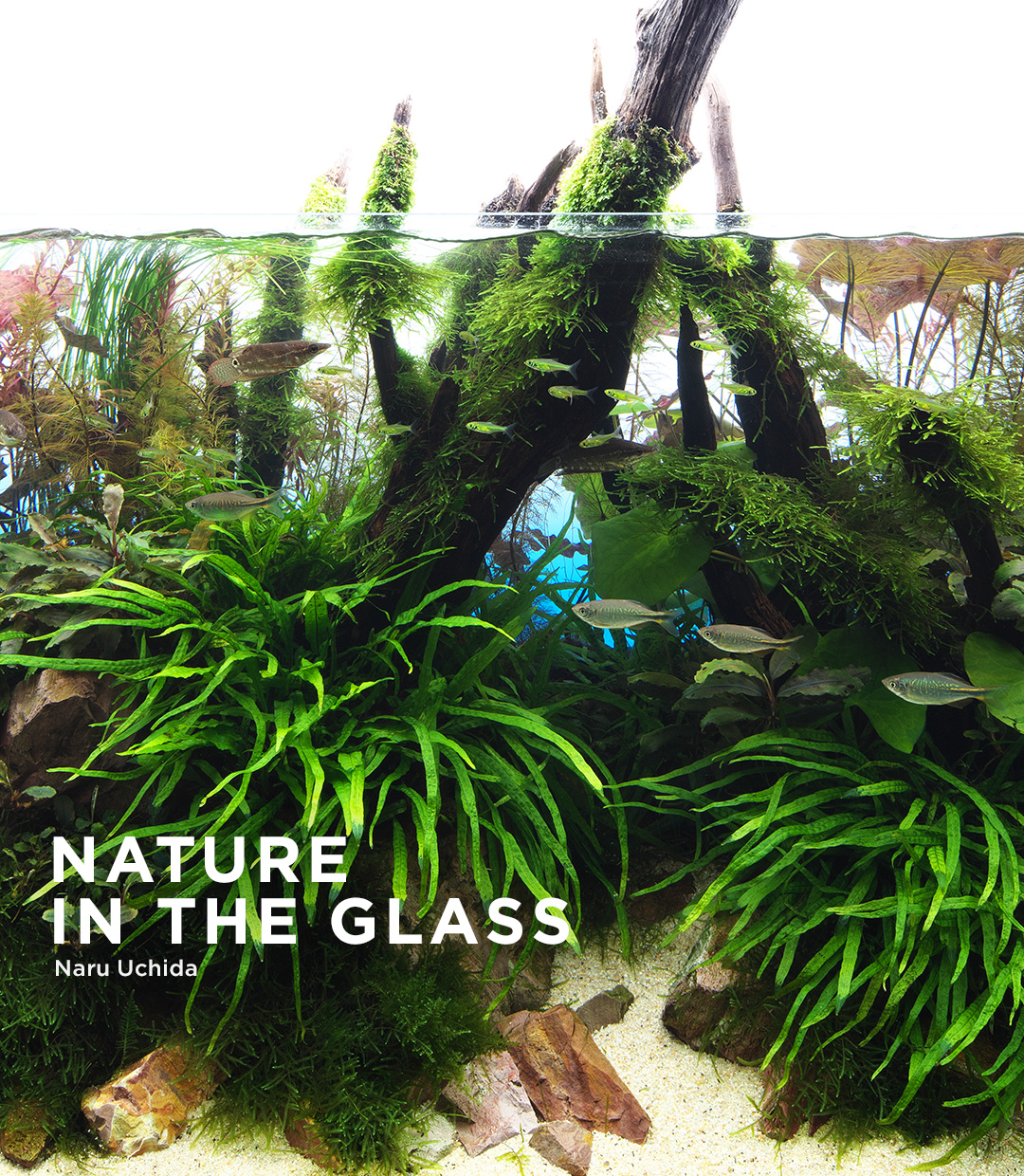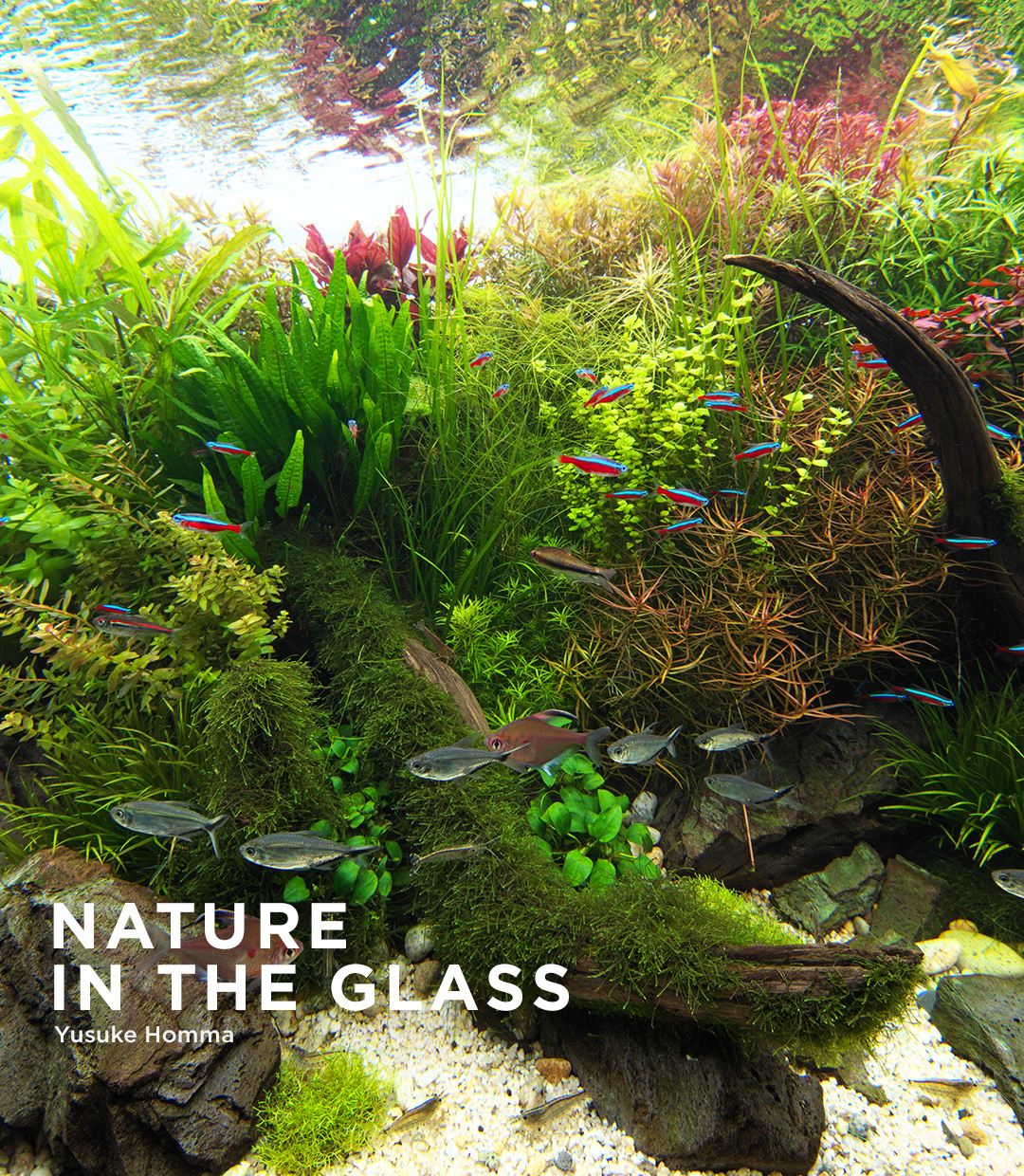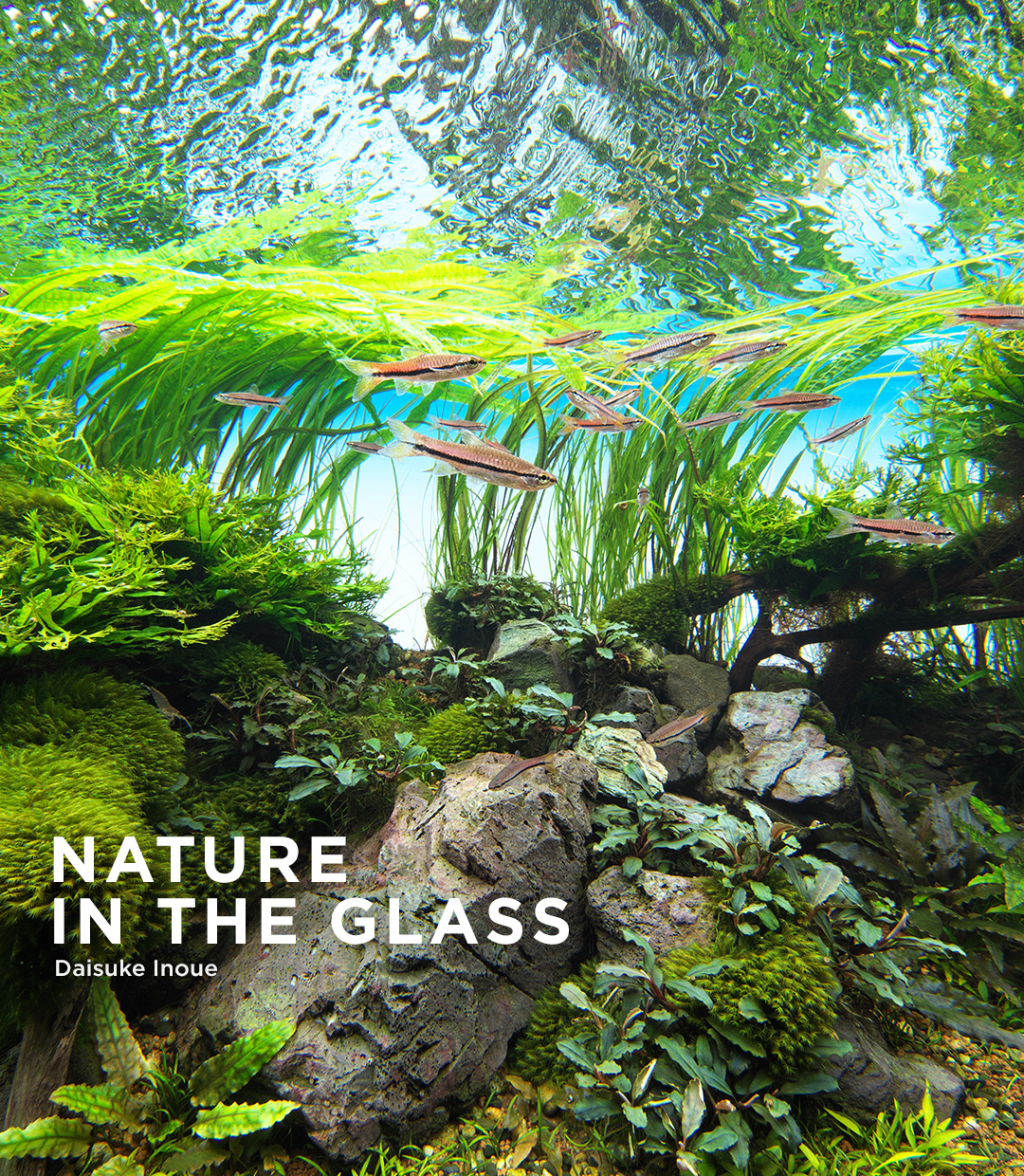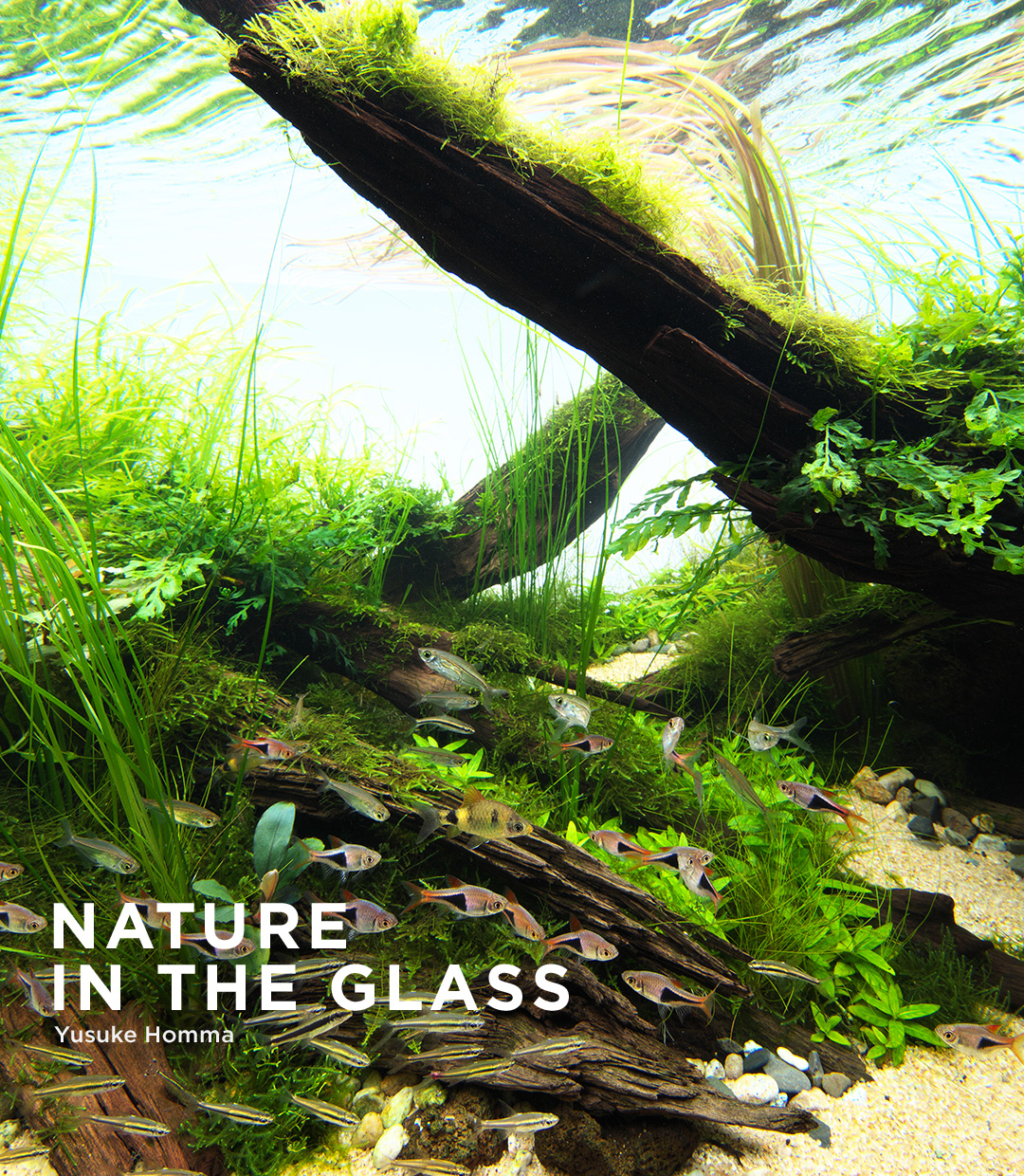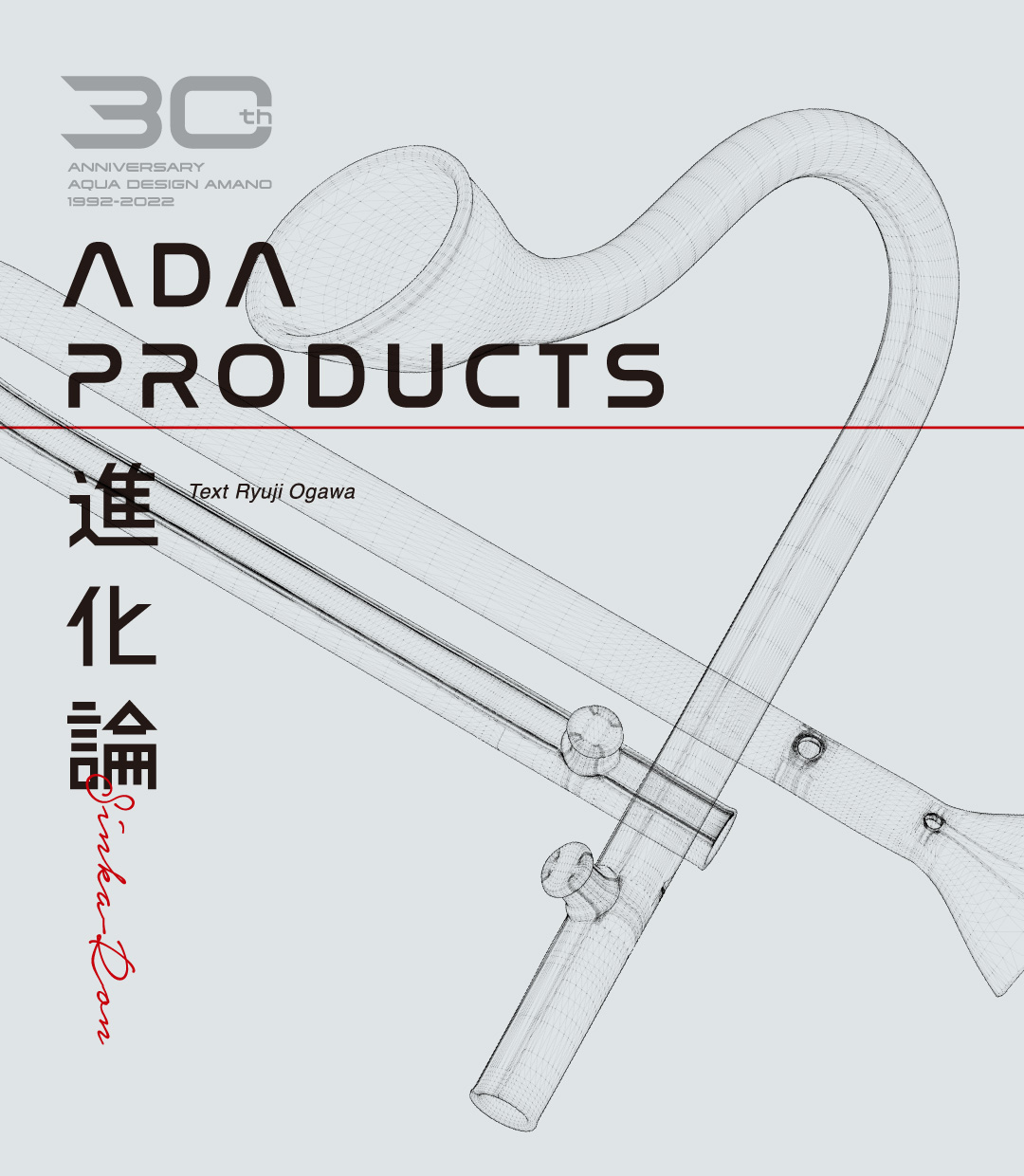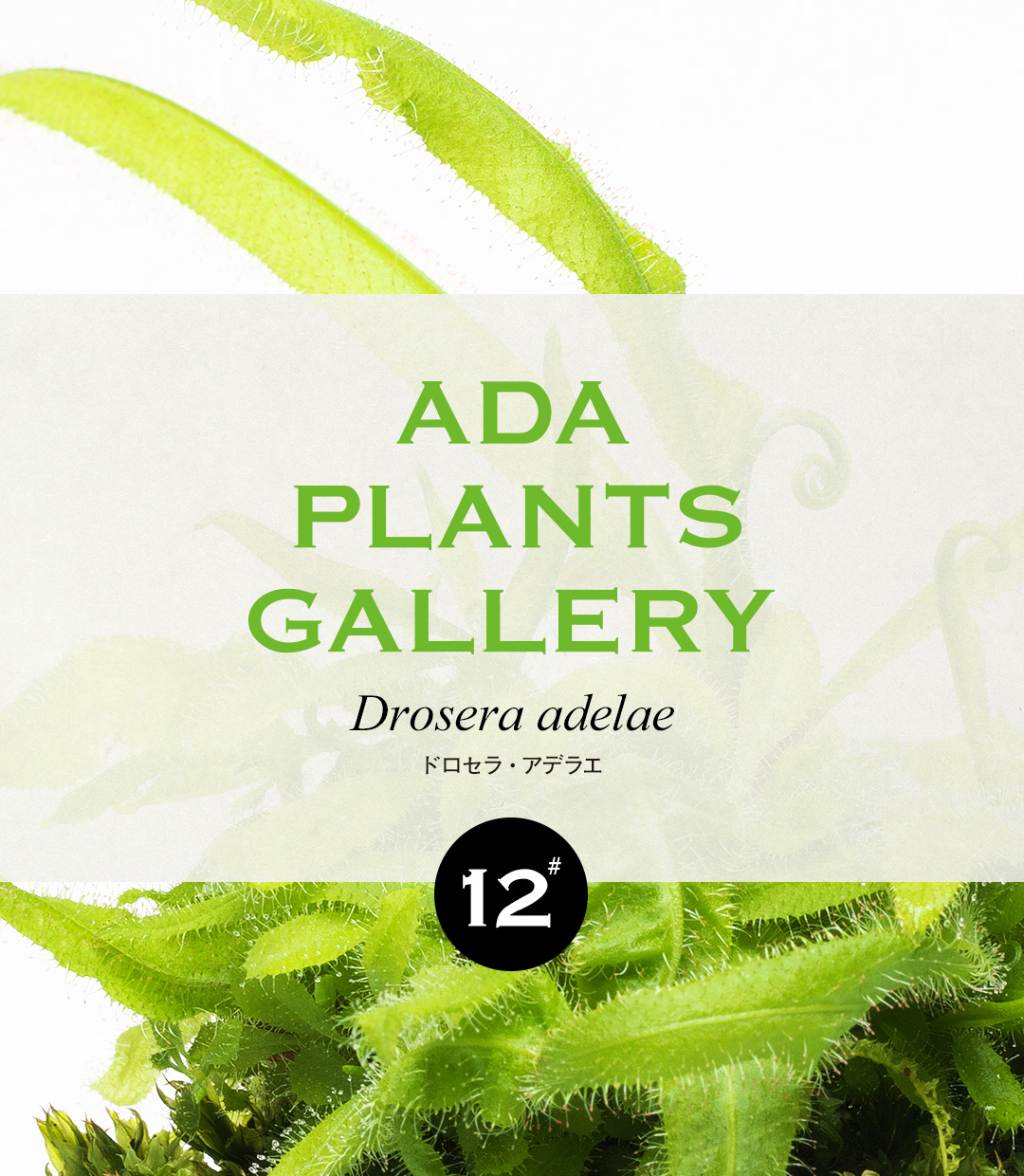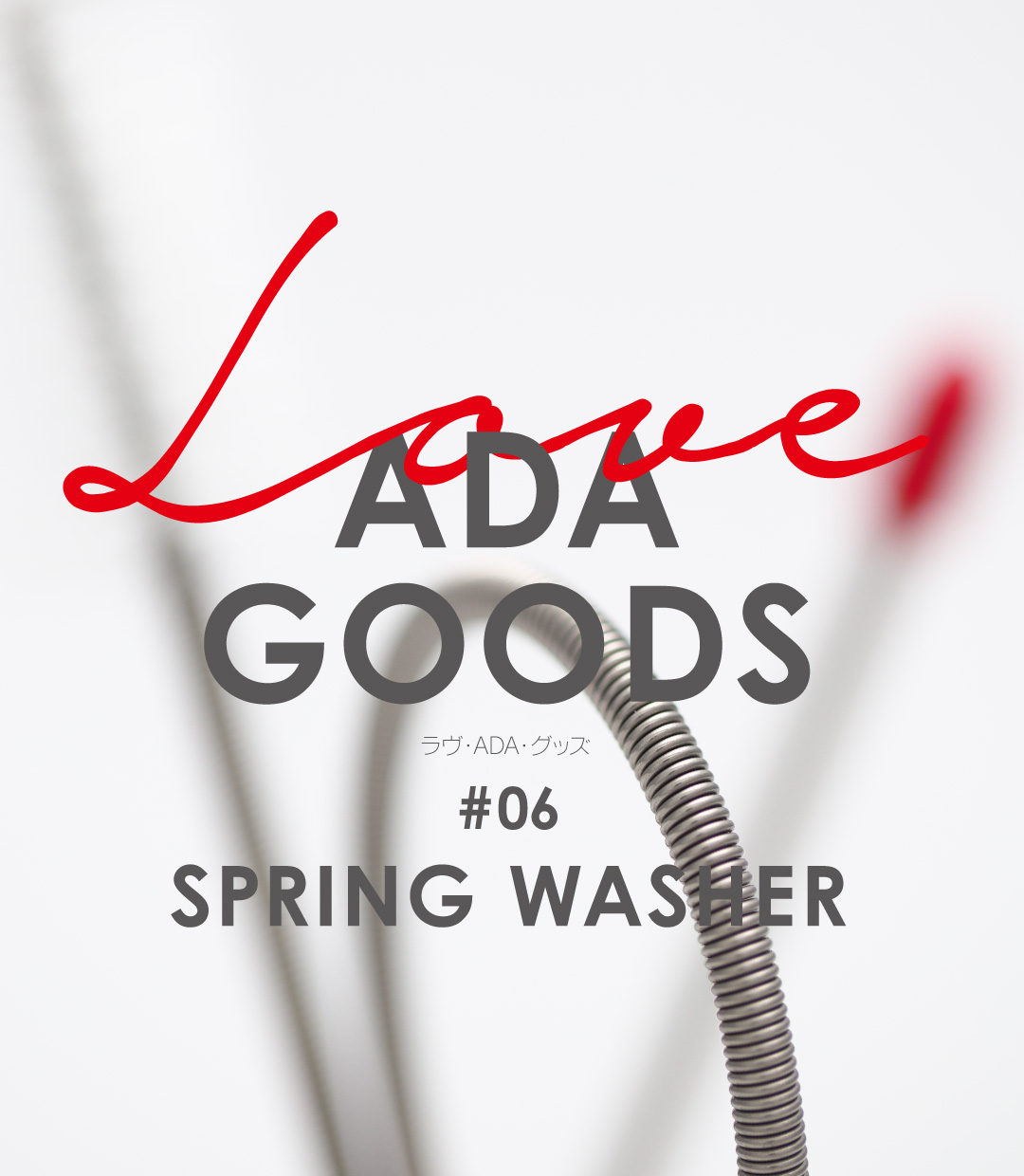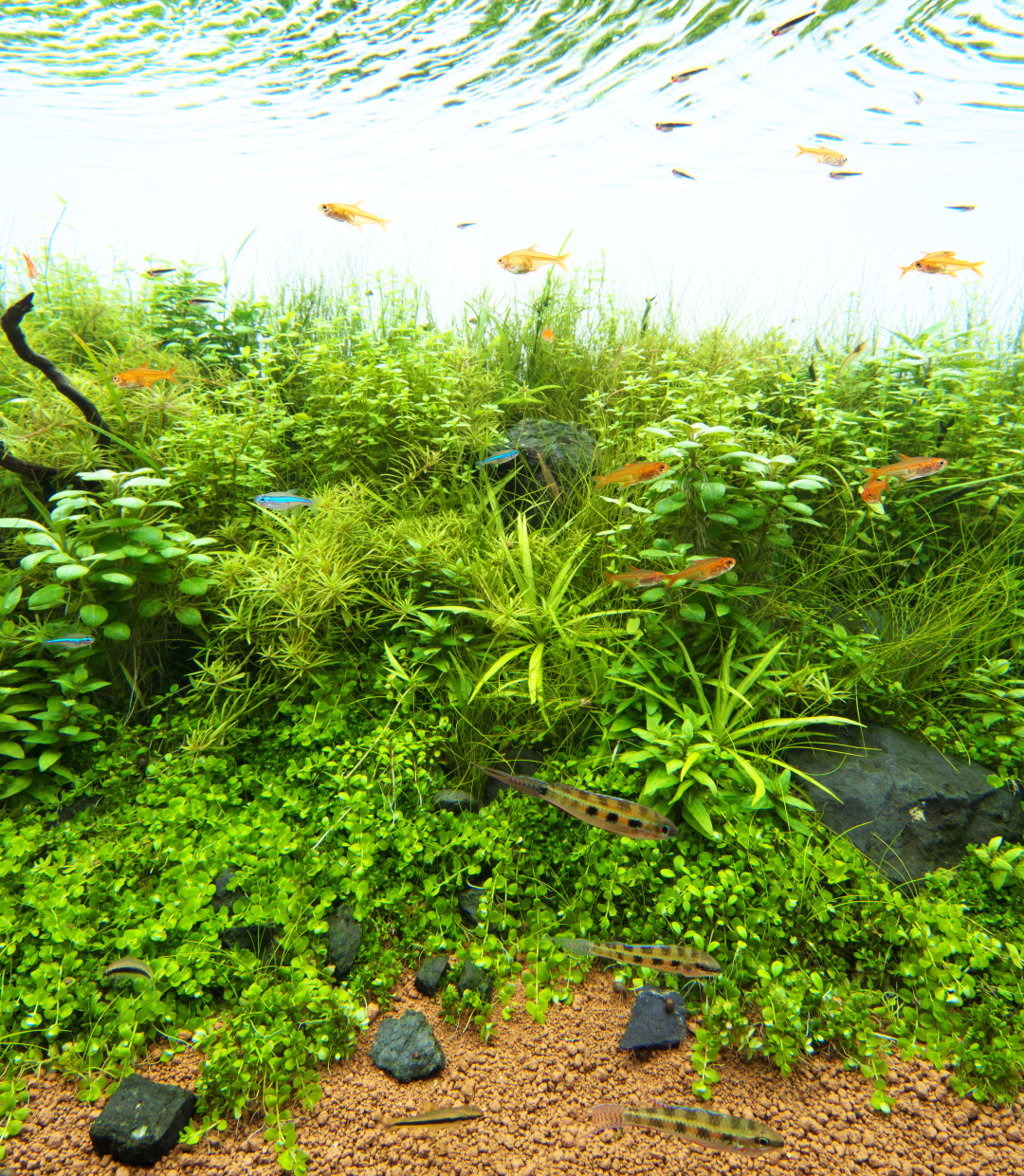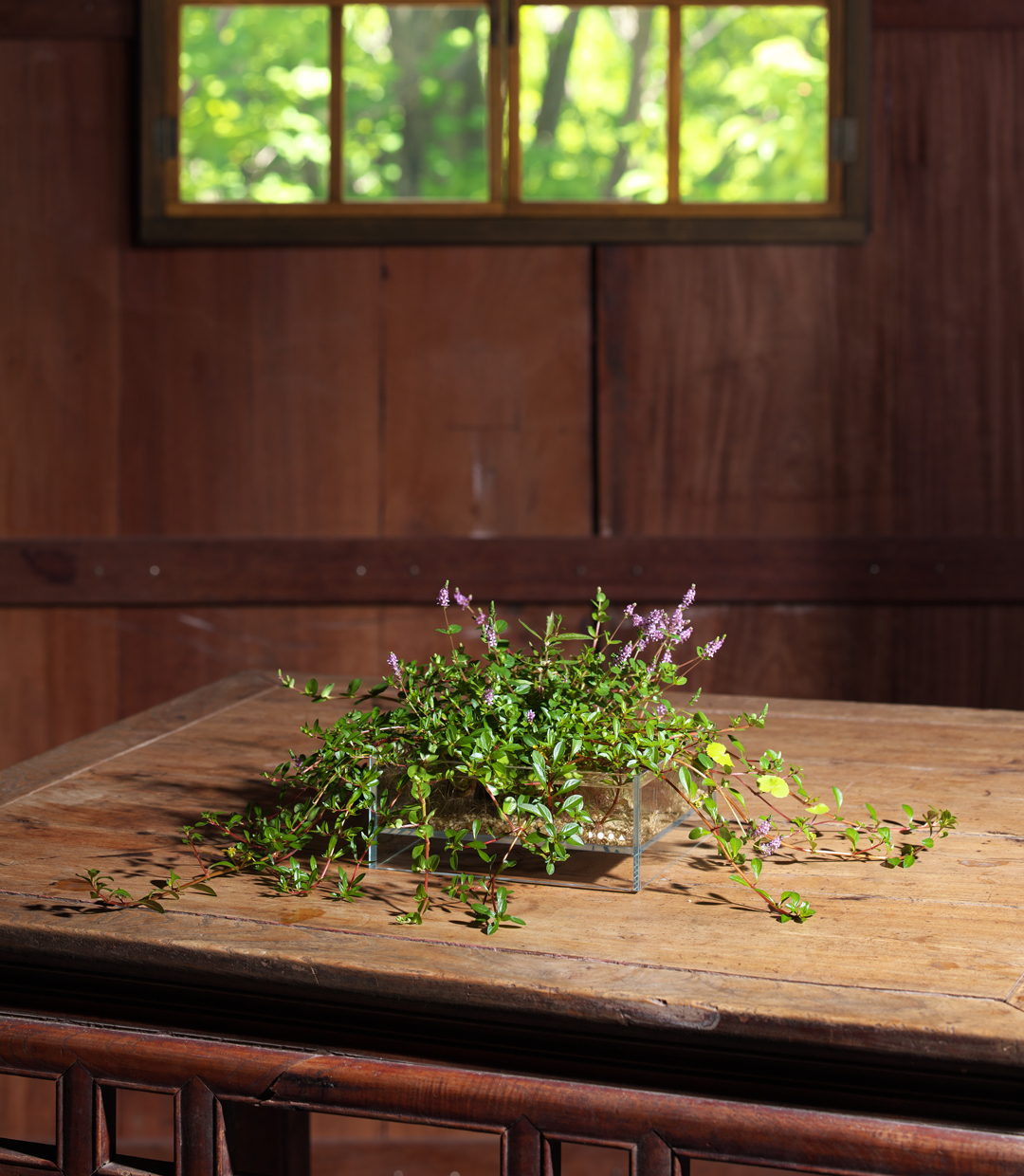NATURE IN THE GLASS “Connecting Life”
[Connecting Life]
Natural materials, such as stones and driftwood are always used as compositional materials, and are also important for expressing a sense of nature. Driftwood, in particular, can express a sense of wildness through its bark texture, and is a key to help moss and ferns take root. The driftwood is like a decaying tree where new life is nurtured, and growing aquatic plants and fish swimming among them create an aquascape where you can see a cycle of life. I liked the shape and texture of the main driftwood piece, which gives a sense of the passage of time, and I created this work while imagining how long it had been in existence.
Natural materials, such as stones and driftwood are always used as compositional materials, and are also important for expressing a sense of nature. Driftwood, in particular, can express a sense of wildness through its bark texture, and is a key to help moss and ferns take root. The driftwood is like a decaying tree where new life is nurtured, and growing aquatic plants and fish swimming among them create an aquascape where you can see a cycle of life. I liked the shape and texture of the main driftwood piece, which gives a sense of the passage of time, and I created this work while imagining how long it had been in existence.
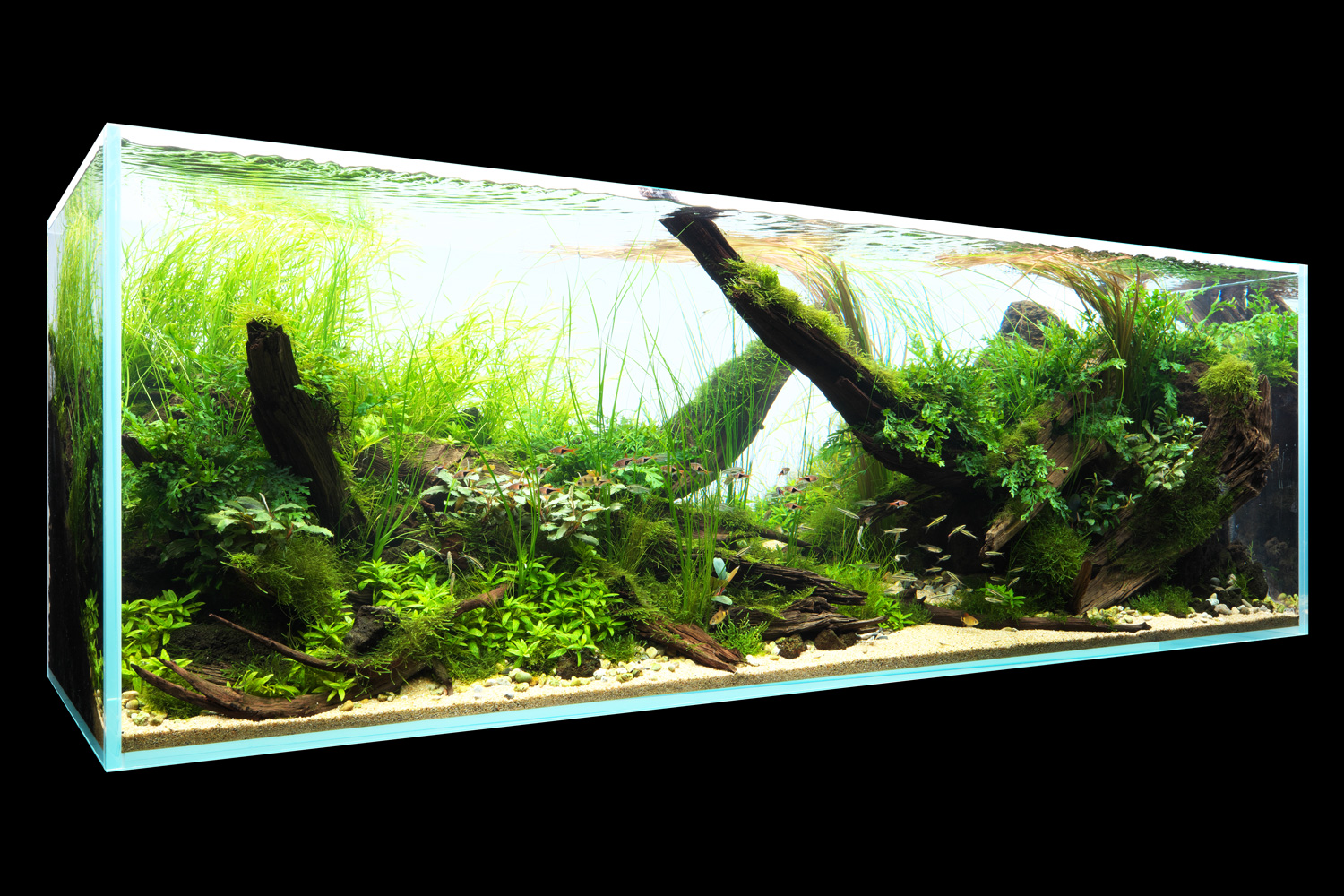
DATA
Shooting date: July 12, 2022 (ADA)
Creator: Yusuke Homma (layout production, text)
Aquarium: Cube Garden W180 x D60 x H60 (cm)
Lighting: Solar RGB x 3 (8.5 hours per day)
Filtration: Super Jet Filter ES-2400 (Bio Rio G)
Material: Horn Wood, Yougan Stone
Substrate: Aqua Soil – Amazonia Ver.2, Colorado Sand, Gravel, Power Sand Advance L, Bacter 100, Clear Super, Tourmaline BC
CO2: CO2 Pollen Glass Beetle 50Ø, 6 bubbles per second via CO2 Beetle Counter (using Tower)
Aeration: 15.5 hours after the light is turned off using Lily Pipe P-6
Additives: Brighty K, Green Brighty Mineral, Green Brighty Iron
Water change: 1/2 once a week
Water quality: Temperature 25℃, pH:6.4, TH:50mg/L
Plants:
Eriocaulon sp. ‘Social Feather Duster’ *
Bolbitis heudelotii *
Potamogeton gayi
Blyxa sp. ‘Red’
Bucephalandra sp. ‘Sintang’ *
Bucephalandra sp.
Taxiphyllum barbieri *
Fish and Invertebrates:
Trigonostigma heteromorpha
Rasbora agilis
Parachela oxygastroides
Puntius narayani
Crossocheilus oblongus
Otocinclus sp.
Caridina multidentata
* indicates ADA’s living products.
Shooting date: July 12, 2022 (ADA)
Creator: Yusuke Homma (layout production, text)
Aquarium: Cube Garden W180 x D60 x H60 (cm)
Lighting: Solar RGB x 3 (8.5 hours per day)
Filtration: Super Jet Filter ES-2400 (Bio Rio G)
Material: Horn Wood, Yougan Stone
Substrate: Aqua Soil – Amazonia Ver.2, Colorado Sand, Gravel, Power Sand Advance L, Bacter 100, Clear Super, Tourmaline BC
CO2: CO2 Pollen Glass Beetle 50Ø, 6 bubbles per second via CO2 Beetle Counter (using Tower)
Aeration: 15.5 hours after the light is turned off using Lily Pipe P-6
Additives: Brighty K, Green Brighty Mineral, Green Brighty Iron
Water change: 1/2 once a week
Water quality: Temperature 25℃, pH:6.4, TH:50mg/L
Plants:
Eriocaulon sp. ‘Social Feather Duster’ *
Bolbitis heudelotii *
Potamogeton gayi
Blyxa sp. ‘Red’
Bucephalandra sp. ‘Sintang’ *
Bucephalandra sp.
Taxiphyllum barbieri *
Fish and Invertebrates:
Trigonostigma heteromorpha
Rasbora agilis
Parachela oxygastroides
Puntius narayani
Crossocheilus oblongus
Otocinclus sp.
Caridina multidentata
* indicates ADA’s living products.
Layout and maintenance to bring out the power of driftwood
The composition, selection of aquatic plants, and planting were done so that the driftwood in the center of the foreground would stand out, with emphasis on showing the power created by its texture and shape. Similarly, maintenance was carried out by carefully picking and thinning out the volume of the aquatic plants, and by moderately hiding the surrounding driftwood, the powerful appearance of the main driftwood became more prominent. By finding the right balance between the compositional materials and the aquatic plants, the driftwood-centered world where you can see a cycle of life, is created.
The composition, selection of aquatic plants, and planting were done so that the driftwood in the center of the foreground would stand out, with emphasis on showing the power created by its texture and shape. Similarly, maintenance was carried out by carefully picking and thinning out the volume of the aquatic plants, and by moderately hiding the surrounding driftwood, the powerful appearance of the main driftwood became more prominent. By finding the right balance between the compositional materials and the aquatic plants, the driftwood-centered world where you can see a cycle of life, is created.
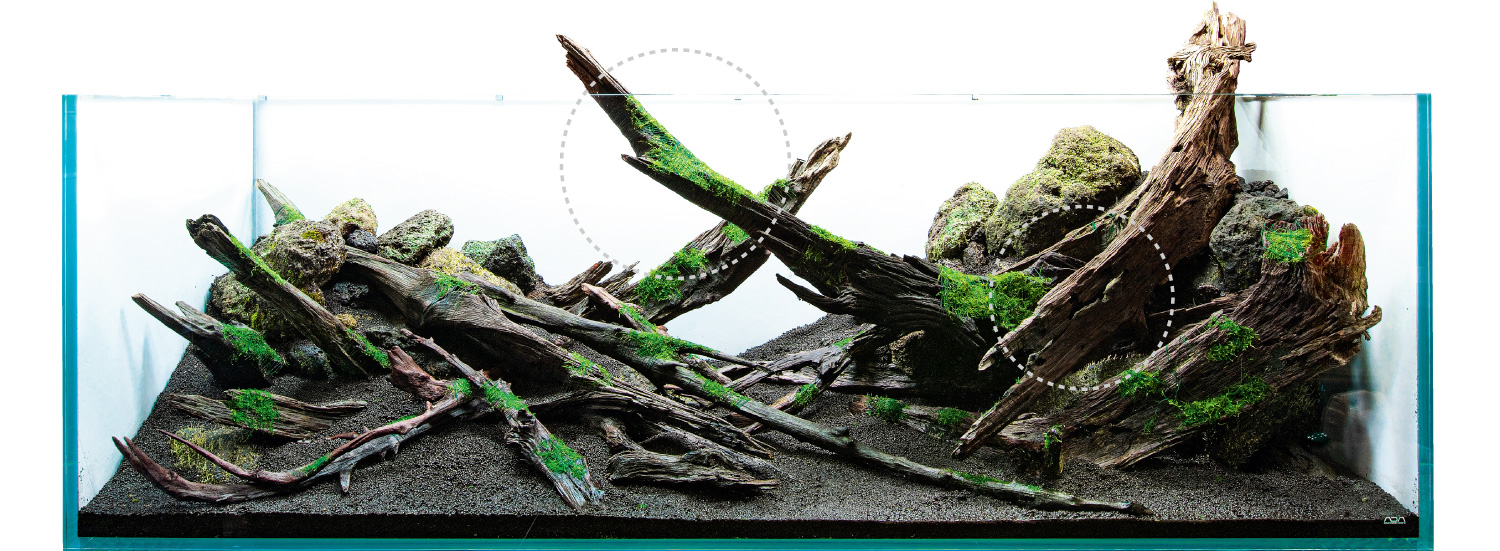
Composition
Composition emphasizing the main driftwood
The central driftwood piece was placed protruding toward the center. By arranging other driftwood pieces lying down, the central driftwood stands out and gives a powerful impression.
Composition emphasizing the main driftwood
The central driftwood piece was placed protruding toward the center. By arranging other driftwood pieces lying down, the central driftwood stands out and gives a powerful impression.
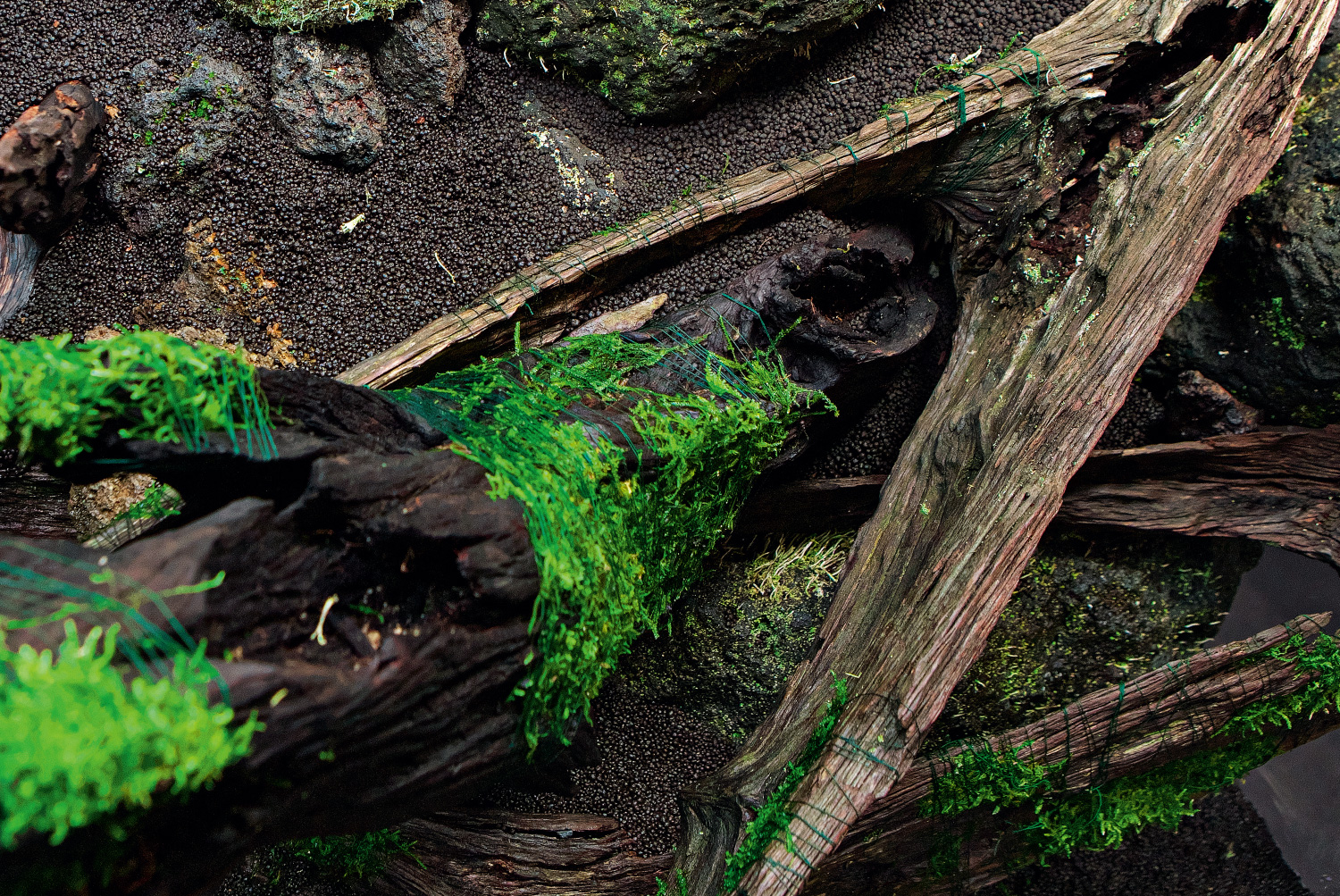
Multiple driftwood pieces were mixed and balanced to fix the angle of the main driftwood.
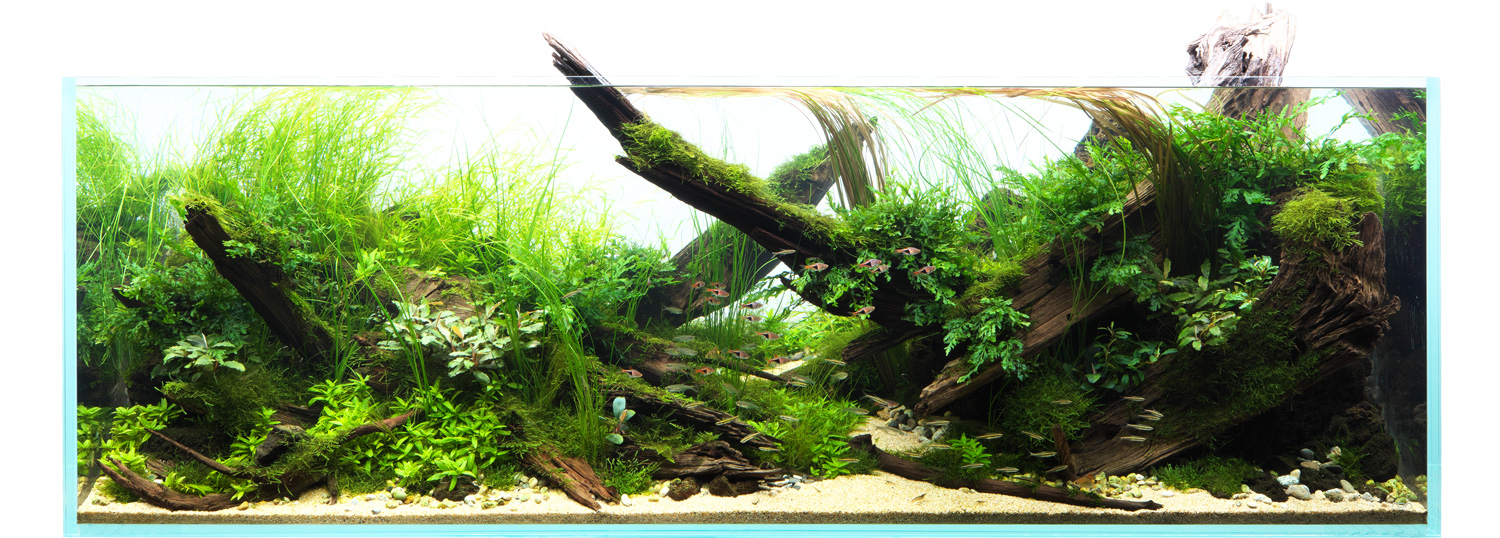
Expression near the substrate with cosmetic sand
At the beginning of the project, Eleochalis acicularis was planted in the foreground, but after replacing the substrate with Colorado Sand as cosmetic sand, the driftwood near the substrate became more clearly visible, giving the driftwood a greater presence.
At the beginning of the project, Eleochalis acicularis was planted in the foreground, but after replacing the substrate with Colorado Sand as cosmetic sand, the driftwood near the substrate became more clearly visible, giving the driftwood a greater presence.
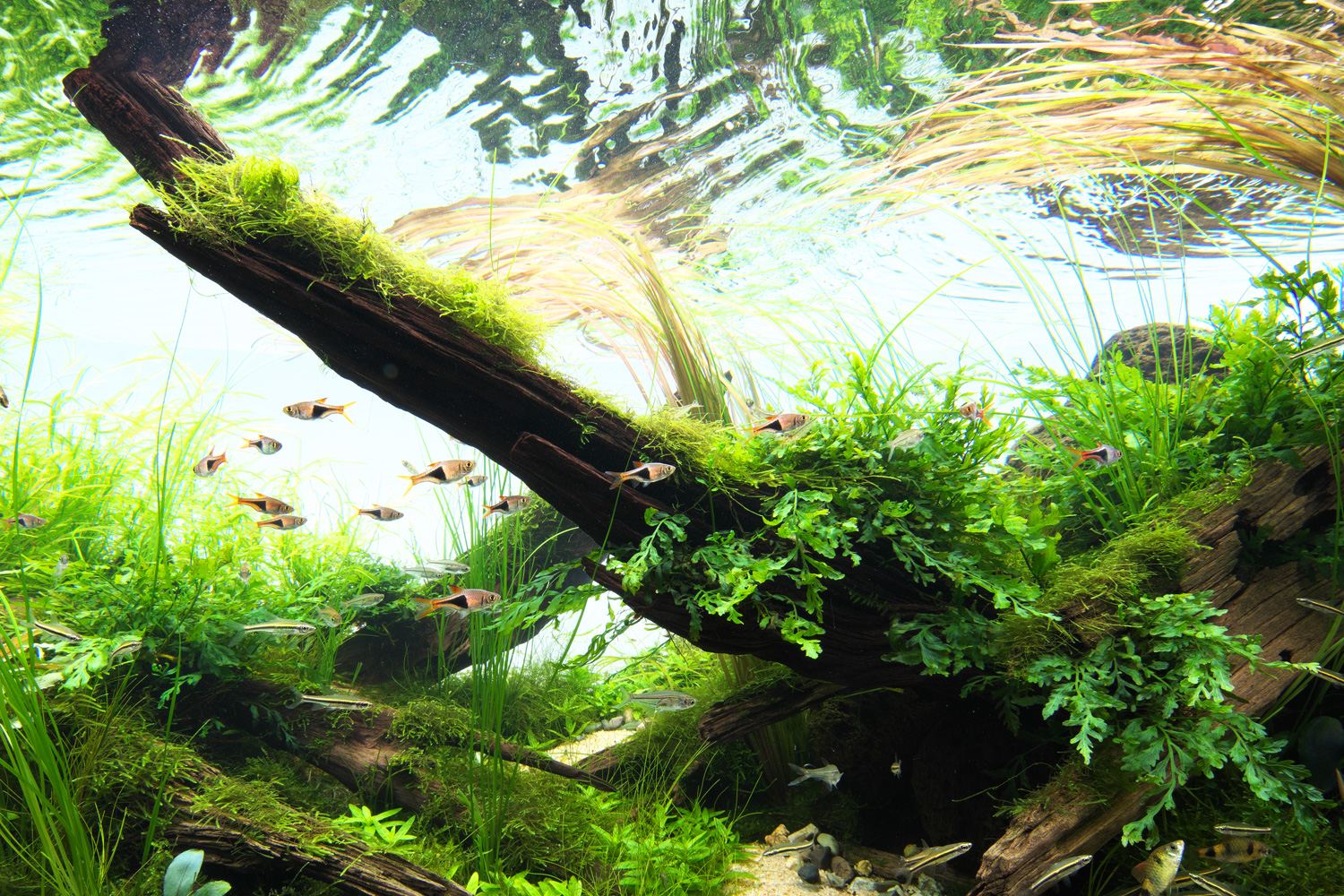
Planting
Planting makes a difference to the impression of driftwood
Blyxa sp. ‘Red’ accentuates the silhouette of the surrounding driftwood, and the transparent Potamogeton gayi in bright green flutters low toward the center to create an impression of depth.
The elongated and slender Eriocaulon sp. placed in the center of the aquascape softened the impression of the driftwood on the rear side, which was arranged to cross the main driftwood piece, and made the powerful look of the main driftwood more apparent.
Planting makes a difference to the impression of driftwood
Blyxa sp. ‘Red’ accentuates the silhouette of the surrounding driftwood, and the transparent Potamogeton gayi in bright green flutters low toward the center to create an impression of depth.
The elongated and slender Eriocaulon sp. placed in the center of the aquascape softened the impression of the driftwood on the rear side, which was arranged to cross the main driftwood piece, and made the powerful look of the main driftwood more apparent.
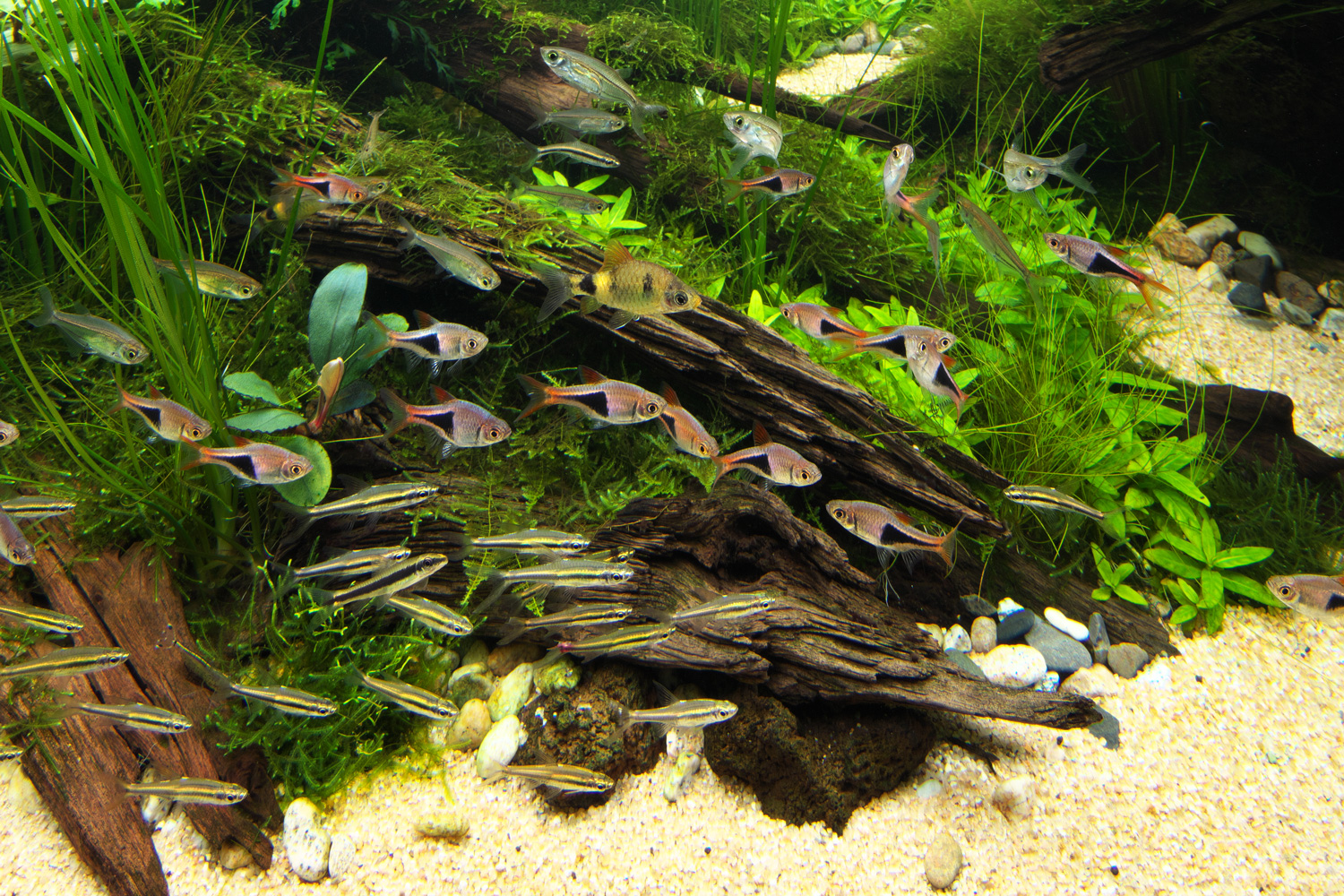
Maintenance
Expressing the water flow with growth maintenance
In the areas that evoke fast water currents, the moss growing on the driftwood was thinned out frequently so that the driftwood bark was always exposed to express strong currents.
As Eriocaulon sp. grows larger, the outer leaves become tougher, making it difficult to express the appearance of leaves clustered together and fluttering in the water current. By cutting the outer leaves, the soft leaves, mainly buds, were left to create a sense of fast-flowing water.
Expressing the water flow with growth maintenance
In the areas that evoke fast water currents, the moss growing on the driftwood was thinned out frequently so that the driftwood bark was always exposed to express strong currents.
As Eriocaulon sp. grows larger, the outer leaves become tougher, making it difficult to express the appearance of leaves clustered together and fluttering in the water current. By cutting the outer leaves, the soft leaves, mainly buds, were left to create a sense of fast-flowing water.
![[ STYLE OF EPIPHYTIC PLANTS ] Effective use of epiphytic aquatic plants in layout scenes](https://www.adana.co.jp/wp-content/uploads/sites/3/2024/04/ep_img_ogp.jpg)
